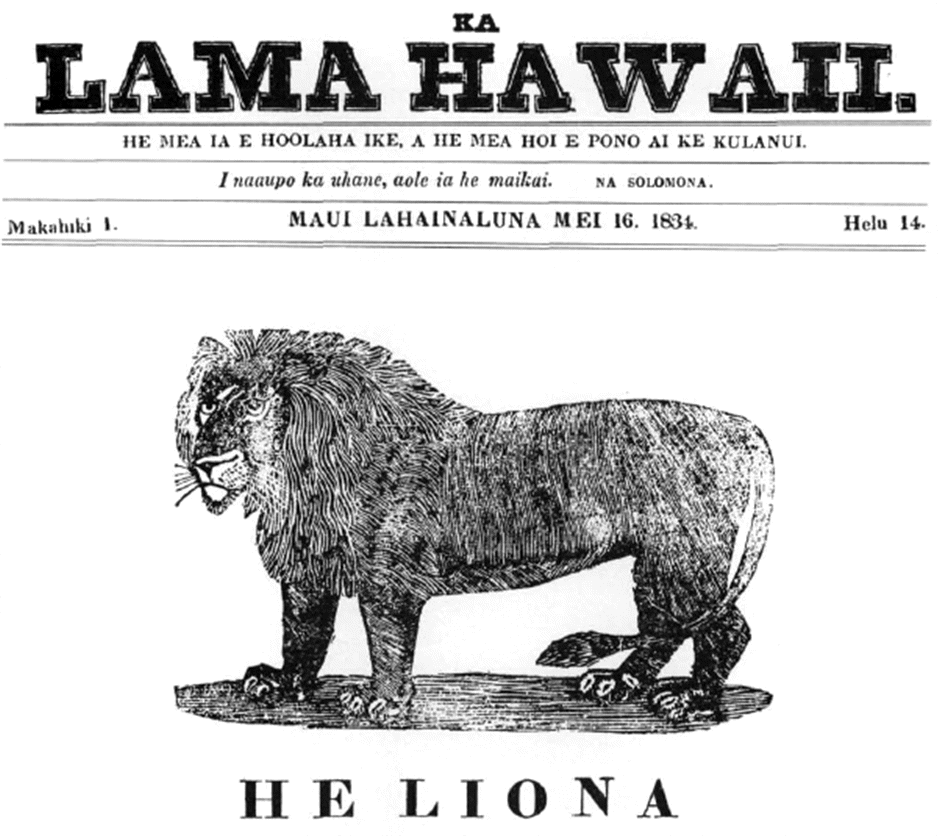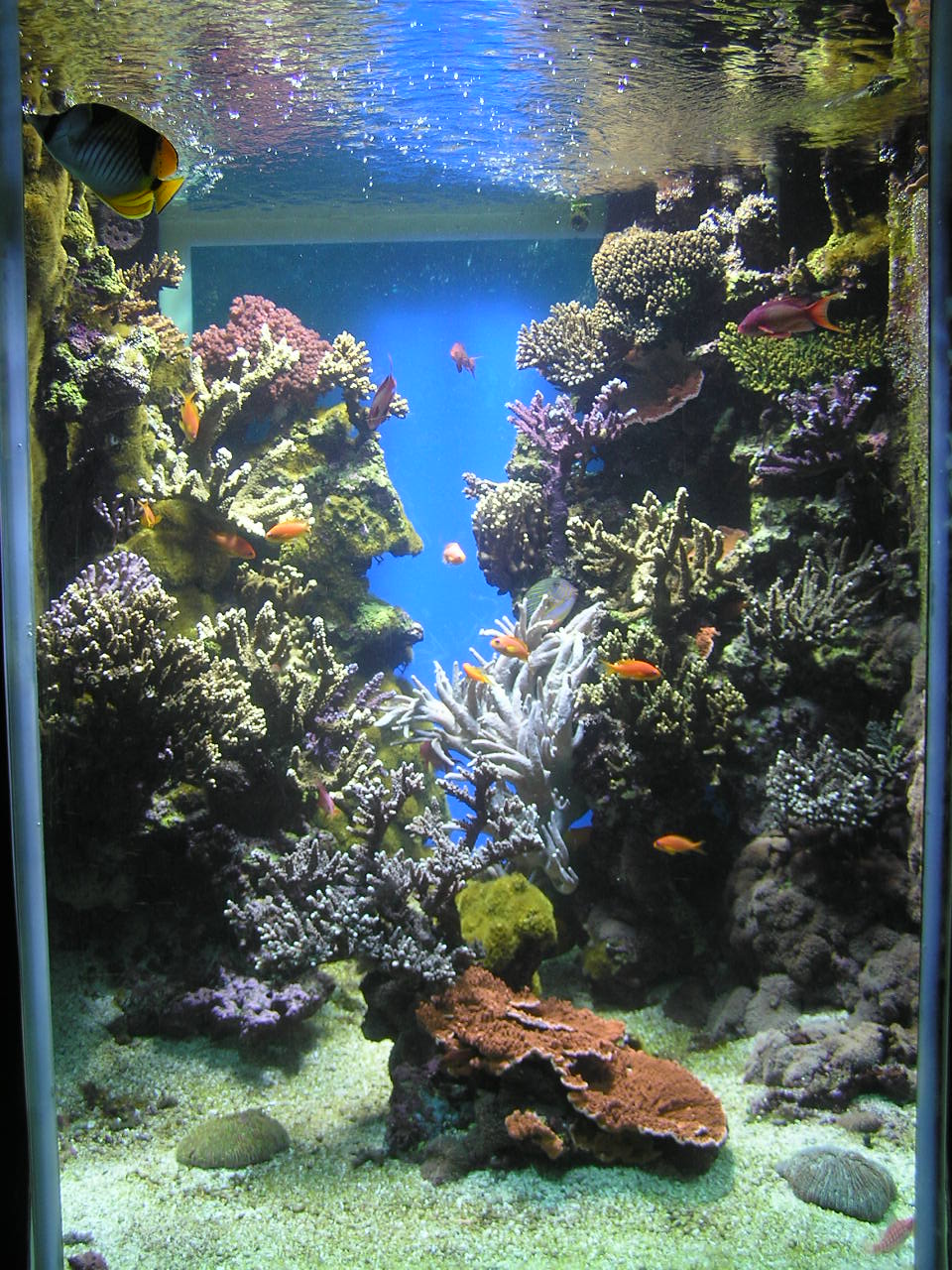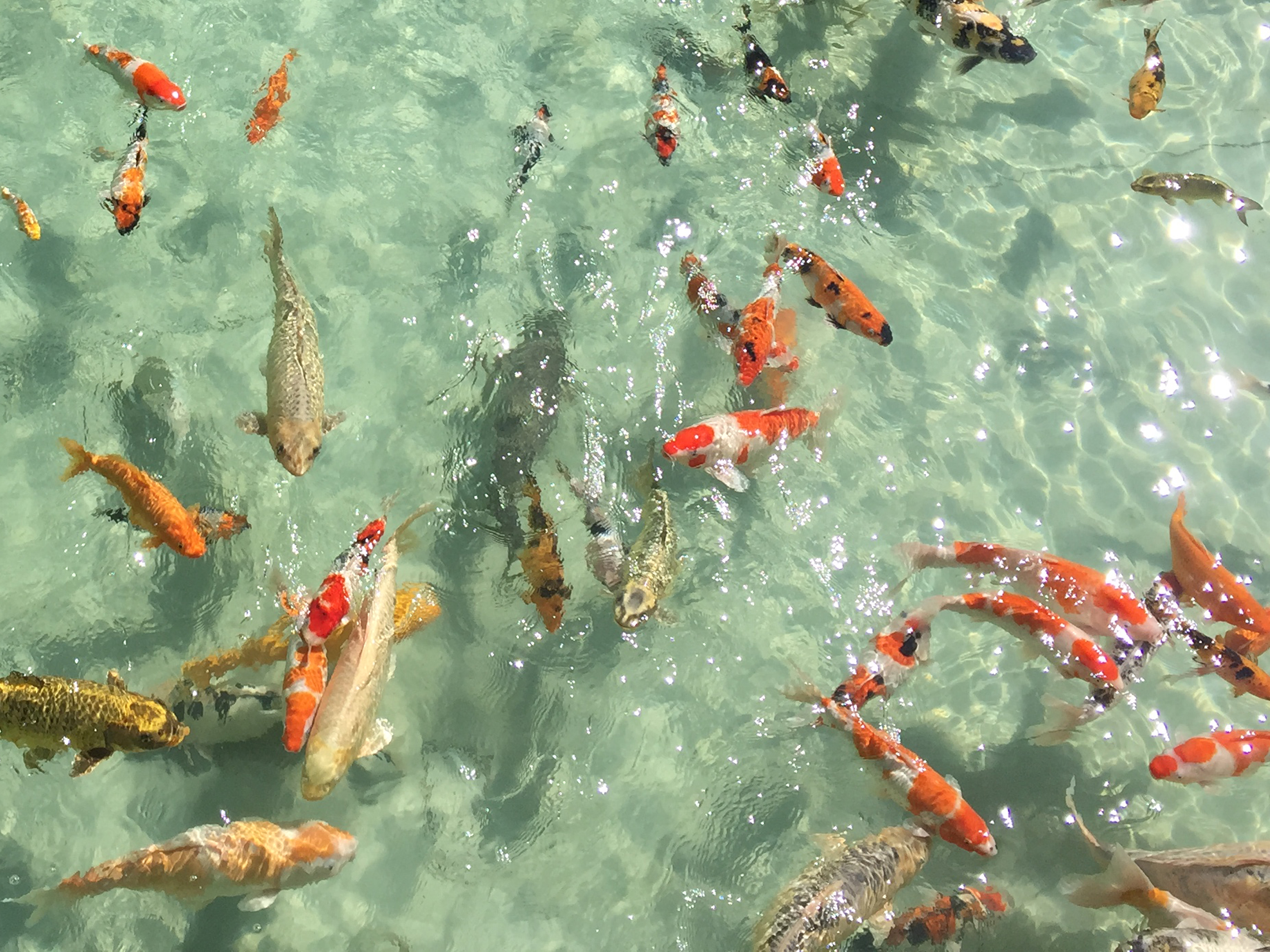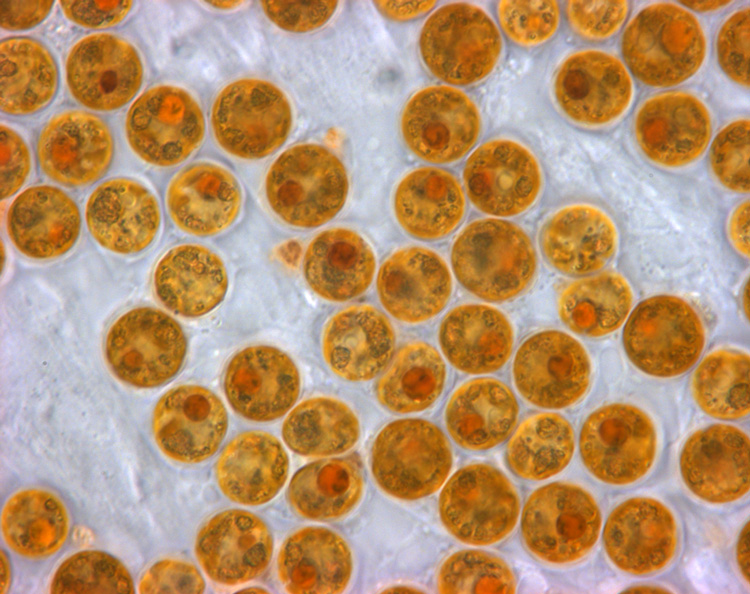|
Palythoa Toxica
''Palythoa toxica'', also referred to by its Hawaiian common name, limu-make-o-Hana ('seaweed of death from Hana'), is a species of zoanthid native to Hawaii. It is notable as the species in which palytoxin was discovered and from which it was first isolated.Clayden, J., Greeves, N. (2000), pages 19–21 Description ''P. toxica'' is an encrusting species with a firm, tough cuticle. The polyps are partially embedded in a cushiony mat of coenenchyme which grows across the rock surface, and which incorporates sand grains and fragments of debris. The oral disc of each polyp is broad and has a fringe of tentacles. The polyps can close up and be retracted into the coenenchyme, which then displays a pitted surface. The colour of this species is variable but is usually some shade of cream, grey or pale brown. History A Hawaiian legend relates how in a rock pool in the Hana district on the island of Maui there was to be found an alga known to the locals as "limu-make-o-Hana" ('seawe ... [...More Info...] [...Related Items...] OR: [Wikipedia] [Google] [Baidu] |
Hawaiian Language
Hawaiian (', ) is a critically endangered Polynesian language of the Austronesian language family, originating in and native to the Hawaiian Islands. It is the native language of the Hawaiian people. Hawaiian, along with English, is an official language of the U.S. state of Hawaii. King Kamehameha III established the first Hawaiian-language constitution in 1839 and 1840. In 1896, the Republic of Hawaii passed Act 57, an English-only law which subsequently banned Hawaiian language as the medium of instruction in publicly funded schools and promoted strict physical punishment for children caught speaking the Hawaiian language in schools. The Hawaiian language was not again allowed to be used as a medium of instruction in Hawaii's public schools until 1987, a span of 91 years. The number of native speakers of Hawaiian gradually decreased during the period from the 1830s to the 1950s. English essentially displaced Hawaiian on six of seven inhabited islands. In 2001, native ... [...More Info...] [...Related Items...] OR: [Wikipedia] [Google] [Baidu] |
Euryhaline
Euryhaline organisms are able to adapt to a wide range of salinities. An example of a euryhaline fish is the short-finned molly, '' Poecilia sphenops'', which can live in fresh water, brackish water, or salt water. The green crab ('' Carcinus maenas'') is an example of a euryhaline invertebrate that can live in salt and brackish water. Euryhaline organisms are commonly found in habitats such as estuaries and tide pools where the salinity changes regularly. However, some organisms are euryhaline because their life cycle involves migration between freshwater and marine environments, as is the case with salmon and eels. The opposite of euryhaline organisms are stenohaline ones, which can only survive within a narrow range of salinities. Most freshwater organisms are stenohaline, and will die in seawater, and similarly most marine organisms are stenohaline, and cannot live in fresh water. Osmoregulation Osmoregulation is the active process by which an organism maintains its ... [...More Info...] [...Related Items...] OR: [Wikipedia] [Google] [Baidu] |
BBC News
BBC News is an operational business division of the British Broadcasting Corporation (BBC) responsible for the gathering and broadcasting of news and current affairs in the UK and around the world. The department is the world's largest broadcast news organisation and generates about 120 hours of radio and television output each day, as well as online news coverage. The service has over 5,500 journalists working across its output including in 50 foreign news bureaus where more than 250 foreign correspondents are stationed. Deborah Turness has been the CEO of news and current affairs since September 2022. In 2019, it was reported in an Ofcom report that the BBC spent £136m on news during the period April 2018 to March 2019. BBC News' domestic, global and online news divisions are housed within the largest live newsroom in Europe, in Broadcasting House in central London. Parliamentary coverage is produced and broadcast from studios in London. Through BBC English Regions, th ... [...More Info...] [...Related Items...] OR: [Wikipedia] [Google] [Baidu] |
Reef Aquarium
A reef aquarium or reef tank is a marine aquarium that prominently displays live corals and other marine invertebrates as well as fish that play a role in maintaining the tropical coral reef environment. A reef aquarium requires appropriately intense lighting, turbulent water movement, and more stable water chemistry than fish-only marine aquaria, and careful consideration is given to which reef animals are appropriate and compatible with each other. Components Reef aquariums consist of a number of components, in addition to the livestock, including: *Display tank: The primary tank in which the livestock are kept and shown. *Stand: A stand allows for placement of the display tank at eye level and provides space for storage of the accessory components. *Sump: An accessory tank in which mechanical equipment is kept. A remote sump allows for a clutter-free display tank. *Refugium: An accessory tank dedicated to the cultivation of beneficial macroalgae and microflora/fauna. The ref ... [...More Info...] [...Related Items...] OR: [Wikipedia] [Google] [Baidu] |
Fishkeeping
Fishkeeping is a popular hobby, practiced by aquarists, concerned with keeping fish in a home aquarium or garden pond. It is a practice that encompasses the art of maintaining one's own aquatic ecosystem, featuring a lot of variety with various water systems, all of which have their own unique features and requirements. Fishkeeping primarily serves as a token of appreciation and fascination for marine life and the environment that surrounds such, along with other purposes such as the pisciculture, piscicultural fishkeeping industry, serving as a branch of agriculture, being one of the most widespread methods of cultivating fish for commercial profit. Origins of fishkeeping Fish have been raised as food in pools and ponds for thousands of years. Brightly colored or tame specimens of fish in these pools have sometimes been valued as pets rather than food. Many cultures, ancient and modern, have kept fish for both functional and decorative purposes. Ancient Sumerians kept wild-c ... [...More Info...] [...Related Items...] OR: [Wikipedia] [Google] [Baidu] |
Coral
Corals are colonial marine invertebrates within the subphylum Anthozoa of the phylum Cnidaria. They typically form compact Colony (biology), colonies of many identical individual polyp (zoology), polyps. Coral species include the important Coral reef, reef builders that inhabit tropical oceans and secrete calcium carbonate to form a hard skeleton. A coral "group" is a colony of very many cloning, genetically identical polyps. Each polyp is a sac-like animal typically only a few millimeters in diameter and a few centimeters in height. A set of tentacles surround a central mouth opening. Each polyp excretes an exoskeleton near the base. Over many generations, the colony thus creates a skeleton characteristic of the species which can measure up to several meters in size. Individual colonies grow by asexual reproduction of polyps. Corals also breed sexually by spawning: polyps of the same species release gametes simultaneously overnight, often around a full moon. Fertilized eggs form ... [...More Info...] [...Related Items...] OR: [Wikipedia] [Google] [Baidu] |
Zooxanthellae
Zooxanthellae (; zooxanthella) is a colloquial term for single-celled photosynthetic organisms that are able to live in symbiosis with diverse marine invertebrates including corals, jellyfish, demosponges, and nudibranchs. Most known zooxanthellae are in the dinoflagellate genus '' Symbiodinium'', but some are known from the genus '' Amphidinium'', and other taxa, as yet unidentified, may have similar endosymbiont affinities. "Zooxanthella" was originally a genus name (meaning literally "little yellow animal") given in 1881 by Karl Brandt to '' Zooxanthella nutricula'' (a mutualist of the radiolarian '' Collozoum inerme'') which has been placed in the Peridiniales. Another group of unicellular eukaryotes that partake in similar endosymbiotic relationships in both marine and freshwater habitats are green algae zoochlorellae. Zooxanthellae are photosynthetic organisms, which contain chlorophyll a and chlorophyll c, as well as the dinoflagellate pigments peridinin and diadi ... [...More Info...] [...Related Items...] OR: [Wikipedia] [Google] [Baidu] |
Symbiosis
Symbiosis (Ancient Greek : living with, companionship < : together; and ''bíōsis'': living) is any type of a close and long-term biological interaction, between two organisms of different species. The two organisms, termed symbionts, can for example be in Mutualism (biology), mutualistic, commensalism, commensalistic, or parasitism, parasitic relationships. In 1879, Heinrich Anton de Bary defined symbiosis as "the living together of unlike organisms". The term is sometimes more exclusively used in a restricted, mutualistic sense, where both symbionts contribute to each other's subsistence. This means that they benefit each other in some way. Symbiosis can be ''obligate'' (or ''obligative''), which means that one, or both of the organisms depend on each other for survival, or ''facultative'' (optional), when they can also subsist independently. Symbiosis is also classified by physical attachment. Symbionts forming a single body live ... [...More Info...] [...Related Items...] OR: [Wikipedia] [Google] [Baidu] |
Ostreopsis
''Ostreopsis'' is a genus of free-living dinoflagellates found in marine environments. Some species are benthic; the planktonic species in the genus are known for the toxic algal blooms that they sometimes cause, threatening human and animal health. Taxonomy The taxonomy of this genus is problematic. When in 1901, Schmidt first created the genus ''Ostreopsis'', he described the type species '' O. siamensis'' from the phytoplankton in the waters of the Gulf of Thailand. However, there were anomalies in the original drawing made by Schmidt, and ''O. siamensis'' was redescribed by Fukuyo in 1981; at the same time, Fukuyo introduced two new species, '' O. lenticularis'' and '' O. ovata''. Distribution and habitat ''Ostreopsis'' spp. have been found in many marine locations around the world. Despite ''O. siamensis'' having been found in the plankton, other species are generally found in benthic habitats. They are most noticeable in temperate seas when they ca ... [...More Info...] [...Related Items...] OR: [Wikipedia] [Google] [Baidu] |
Dinoflagellate
The Dinoflagellates (), also called Dinophytes, are a monophyletic group of single-celled eukaryotes constituting the phylum Dinoflagellata and are usually considered protists. Dinoflagellates are mostly marine plankton, but they are also common in freshwater habitats. Their populations vary with sea surface temperature, salinity, and depth. Many dinoflagellates are photosynthetic, but a large fraction of these are in fact mixotrophic, combining photosynthesis with ingestion of prey ( phagotrophy and myzocytosis). In terms of number of species, dinoflagellates are one of the largest groups of marine eukaryotes, although substantially smaller than diatoms. Some species are endosymbionts of marine animals and play an important part in the biology of coral reefs. Other dinoflagellates are unpigmented predators on other protozoa, and a few forms are parasitic (for example, '' Oodinium'' and '' Pfiesteria''). Some dinoflagellates produce resting stages, called dinoflagellate cys ... [...More Info...] [...Related Items...] OR: [Wikipedia] [Google] [Baidu] |
Palythoa Tuberculosa
''Palythoa tuberculosa,'' also known as the ''Pillow Zoanthid'', or ''Rubbery Zoanthid,'' is a species of cnidarian in the family Sphenopidae. This species is commonly found in shallow tropical waters of the Indo-Pacific region, including Hawai'i, where it plays a role in reef ecosystems by forming encrusting colonies on rocky surfaces. Description Like other zoanthids, ''Palythoa tuberculosa'' lacks a hard skeleton and consists of small polyps embedded in a thick, fleshy mat. The polyps are short and immersed in the surrounding tissue, with tentacles that are typically retracted during the day and extended at night. The colonies can vary in color, including shades of blue-gray, green, gray, brown, or pink. Distribution and habitat ''Palythoa tuberculosa'' is widely distributed across the Indo-Pacific, including regions such as Hawai'i, Japan, and the Great Barrier Reef. It inhabits a range of environments, from exposed rocky coastlines with heavy wave action to sandy reef fl ... [...More Info...] [...Related Items...] OR: [Wikipedia] [Google] [Baidu] |
Marine Biology
Marine biology is the scientific study of the biology of marine life, organisms that inhabit the sea. Given that in biology many scientific classification, phyla, family (biology), families and genera have some species that live in the sea and others that live on land, marine biology classifies species based on the environment (biophysical), environment rather than on taxonomy (biology), taxonomy. A large proportion of all life, life on Earth lives in the ocean. The exact size of this "large proportion" is unknown, since many ocean species are still to be discovered. The ocean is a complex three-dimensional world, covering approximately 71% of the Earth's surface. The habitats studied in marine biology include everything from the tiny layers of surface water in which organisms and abiotic items may be trapped in surface tension between the ocean and atmosphere, to the depths of the oceanic trenches, sometimes 10,000 meters or more beneath the surface of the ocean. Specific habi ... [...More Info...] [...Related Items...] OR: [Wikipedia] [Google] [Baidu] |







